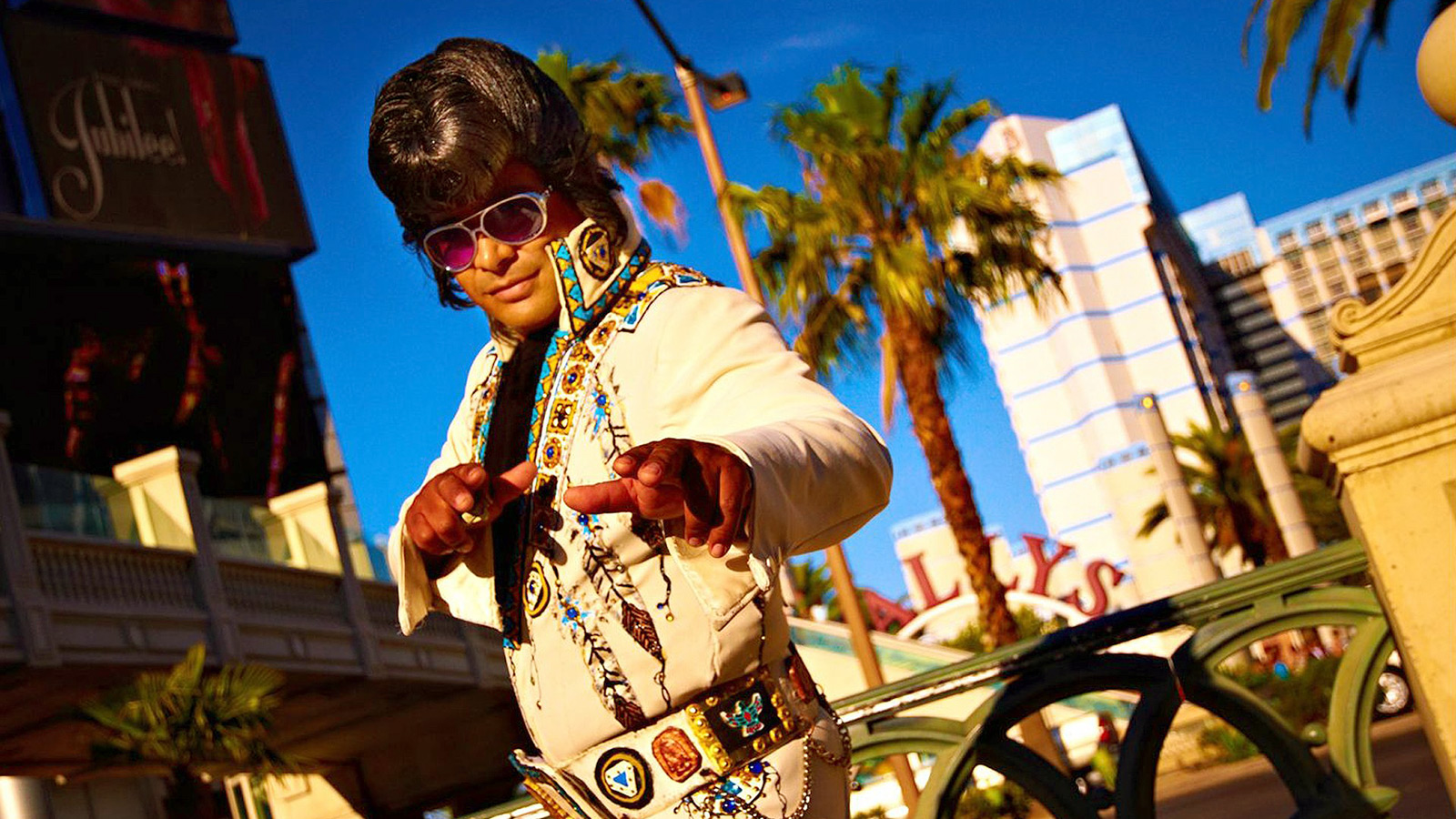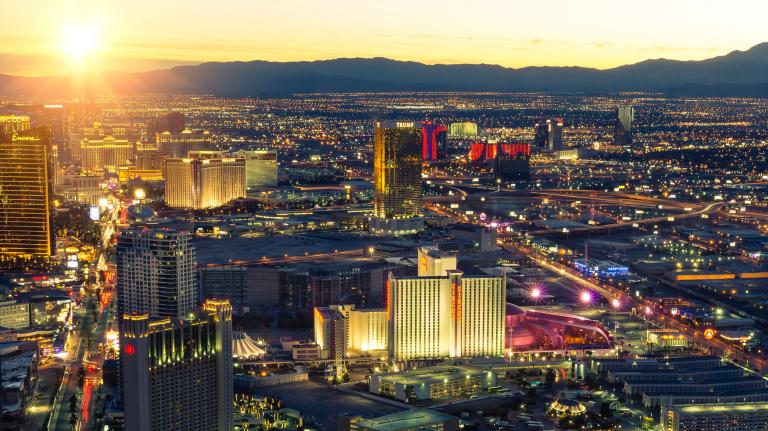This summer, climate deniers will gather for their annual meeting of the twisted minds, the International Conference on Climate Change, organized by the Heartland Institute and underwritten by the good people who brought you climate change in the first place. Their choice for a venue? The beautiful Mandalay Bay Hotel and Casino in Las Vegas, Nev.
On the surface, it seems like the perfect location. Vegas is built on fakery and denial. It’s a metropolis of 2 million people designed to look like Anytown, U.S.A., never mind the blazing desert at its fringes. The Strip, the metro’s thumping economic heart, is a blow-up sex doll of an urban experience, carefully engineered to make you feel rich even after you’ve been bilked of your last penny.
But despite all the sleight of hand, Vegas has had to grapple with some thorny realities — and climate change is bringing more.
Ask about climate in Las Vegas, and people go straight to the dearth of water. Rightly so: In a city that gets four inches of rain each year, residents pump billions of gallons of water out of nearby Lake Mead, a reservoir on the overtaxed Colorado River, and proceed to dump more than half of it on their lawns. There’s also the disconcerting (and rather embarrassing) fact that the lake level keeps threatening to drop below the city’s intake pipes, prompting water authorities to bore ever deeper (and astronomically expensive) tunnels through the rock to ensure that they won’t literally be left high and dry.
But as I’ve written before, metro Las Vegas has come a long way in making better use of its water; it has banked a significant amount of the wet stuff underground for use in dry times; and thanks to some savvy diplomacy over the years, has managed to hitch its fate to that of the seven states along the Colorado River. As Vegas goes, so goes everybody else, so it’s in everyone’s best interest to keep the city’s taps running.
Vegas is unlikely to run out of water any time soon, but it is vulnerable in other ways. Last June, 34 people were hauled off to local hospitals and another 172 were treated for heat-related injuries when the mercury hit 115 degrees during the Warped Tour, an all-day punk and metal fest held in the parking lot of the Silverton Casino. At least one local resident died of heatstroke during the spell of especially hot weather, and more could have followed had Nevada Energy been unable to quickly restore power to a number of homes that lost it because of the heat.
Vegas has found a way to deny this reality, too, of course. It’s called air-conditioning. But pity those who can’t afford A/C, or to pay to weatherize their drafty houses — or those whose power goes out in the midst of a heat wave.
And it’s only going to get harder, and more expensive, for Las Vegans to maintain their illusions. According to the just-released National Climate Assessment, if we continue to increase the amount of pollution we pump into the air (and there’s little reason to believe that we won’t), the southwestern U.S. will see average annual temperatures rise by 5.5 to 9.5 degrees F by the end of the century, and as early as 2070.
Add 5 or 10 degrees to a 115-degree scorcher and shit gets real in a hurry. The climate assessment — a national version of the IPCC report that sums up the most recent, reliable science — projects that heat waves will become longer, hotter, and more frequent. Not only does that put people at risk of heatstroke and other temperature-related problems, but it also worsens ground-level air pollution and exacerbates a host of cardiovascular, kidney, and respiratory diseases.
“Climate change is going to affect poor people and people of color most,” Laura Martin, communications director for the Progressive Leadership Alliance of Nevada, told me recently. “We have places like the Historic West Side, Ward 5, that is one of the poorest areas in the country, with the worst health outcomes. It’s a food desert. It’s a wasteland. As people fight about climate change, they forget about places like Ward 5.”
The prognosis for the region’s water supply isn’t any better. Here’s the climate assessment:
Southwest paleoclimate records show severe mega-droughts at least 50 years long. Future droughts are projected to be substantially hotter, and for major river basins such as the Colorado River Basin, drought is projected to become more frequent, intense, and longer lasting than in the historical record.
That’s harsh news for a region that is already 14 years into the most serious drought in more than 1,000 years.
Precipitation is tougher to predict than temperature, and in the Southwest, questions surrounding the El Niño ocean temperature cycle make for widely divergent results from climate models. But if the worst-case scenario comes to pass, Las Vegans can kiss more of their grass goodbye. We won’t be shedding any tears for them on that front, but there will be other, more significant tradeoffs, such as whether to continue to water trees that can provide shelter from the heat and reduce urban heat island effect, says Tom Piechota, a professor of Civil and Environmental Engineering at the University of Nevada, Las Vegas, who co-authored the National Climate Assessment chapter on the Southwest.
There’s also the fact that population in southwestern cities is projected to grow, even as climate change drives temperatures up and, potentially, water supplies down. “Put those two stresses on a system like that and it becomes particularly challenging,” Piechota says.
For a little long-term perspective on all this, I visited Matt Lachniet, a UNLV associate geology professor who crawls around in caves collecting stalagmites, which hold a sort of tree-ring record of historic temperatures. His findings in Central America have helped corroborate the connection between historic droughts and times of social upheaval such as the Mexican Revolution and the collapse of the Aztec city of Teotihuacan.
Lachniet is finishing work on a study of caves in the Great Basin that suggests that recent temperatures, however extreme, are not outside the range of normal variation for the region, he says. That’s not to say that humans haven’t altered the climate. Quite the opposite, in fact: We’re in a naturally cool period in the Earth’s geologic history and still the temperatures are rising, he says. Just wait until we pile natural warming on top of the human-made stuff.
Vegas still has plenty of work to do to prepare for what climate change has in store, Lachniet says. Still, compared to the Aztecs, “We’re much more adaptable now,” he says. The question, he adds, is, “When will the costs of doing nothing exceed the costs of adaptation?”
Best not to leave that decision up to the deniers, who’ll be sweating their gourds off in Vegas this July, but no doubt keeping their rose-colored (and rhinestone studded) glasses firmly in place.




